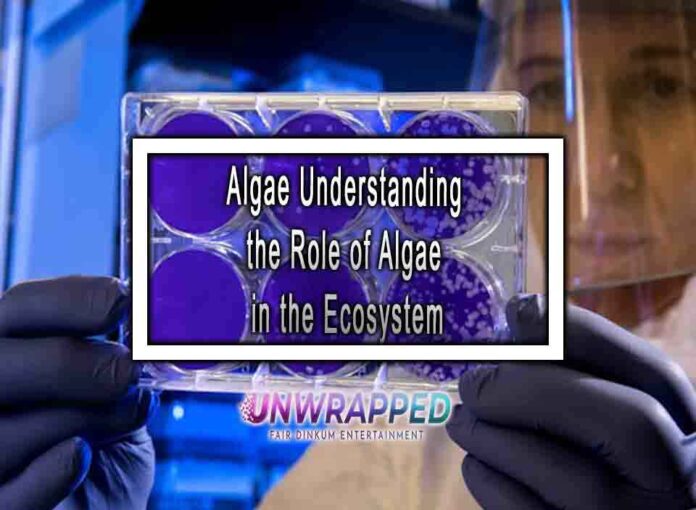Algae play a crucial role in various ecosystems, contributing significantly to the balance of life on Earth. These photosynthetic organisms are diverse and can be found in a wide range of environments, from oceans to freshwater ecosystems and even terrestrial habitats. Here’s an exploration of the role of algae in the ecosystem:
1. Oxygen Production:
- Algae, like plants, undergo photosynthesis, a process that converts carbon dioxide into oxygen using sunlight. They are responsible for a substantial portion of the Earth’s oxygen production, contributing to the atmosphere’s oxygen content.

2. Carbon Dioxide Fixation:
- Algae absorb carbon dioxide during photosynthesis, helping to mitigate the impact of increasing carbon dioxide levels in the atmosphere. They play a role in the global carbon cycle by fixing carbon and incorporating it into their biomass.
3. Primary Producers:
- Algae are primary producers in aquatic ecosystems, forming the base of the food chain. They convert energy from the sun into organic matter, which is then consumed by various organisms, ranging from zooplankton to fish and other higher-level consumers.
4. Food Source:
- Algae serve as a direct food source for many aquatic organisms. For example, certain types of algae, such as phytoplankton, are essential for the growth and development of zooplankton, which, in turn, are consumed by larger organisms.
5. Habitat and Shelter:
- Algae provide habitats and shelter for a variety of organisms. In aquatic ecosystems, they create complex structures that offer refuge for small invertebrates, juvenile fish, and other microorganisms.
6. Nutrient Cycling:
- Algae contribute to nutrient cycling by taking up and releasing nutrients. For example, they absorb nitrogen and phosphorus from the water, playing a role in regulating nutrient levels in aquatic environments.
7. Bioremediation:
- Certain types of algae have the ability to absorb and accumulate pollutants from their environment. This process, known as bioremediation, is being explored for its potential in cleaning up polluted water bodies.
8. Aquaculture and Fisheries:
- Algae are used in aquaculture as a source of nutrition for farmed fish and other aquatic organisms. They serve as a vital component in the diets of various species, contributing to the sustainability of fisheries.
9. Biodiversity Support:
- Algae contribute to the overall biodiversity of ecosystems. The diversity of algae species provides a wide array of ecological niches and supports the coexistence of various organisms within an ecosystem.
10. Phytoplankton Blooms:
- While phytoplankton are essential for marine ecosystems, excessive growth, or “blooms,” can have ecological impacts, including the depletion of oxygen levels in the water (hypoxia) and the release of toxins harmful to aquatic life.
Conclusion:
Algae, with their diverse forms and functions, are integral to the health and functioning of ecosystems worldwide. Their contributions to oxygen production, nutrient cycling, food webs, and habitat creation highlight the interconnectedness of life on Earth. Understanding the role of algae is crucial for environmental management and the conservation of biodiversity in both aquatic and terrestrial ecosystems.











